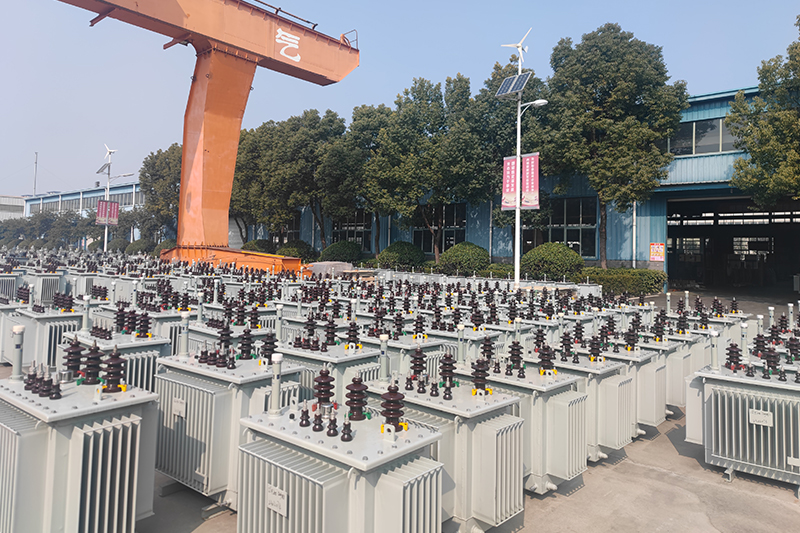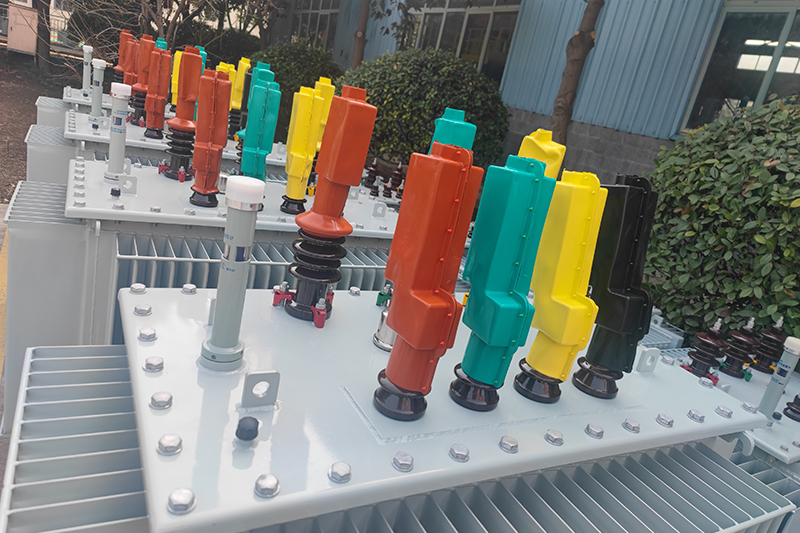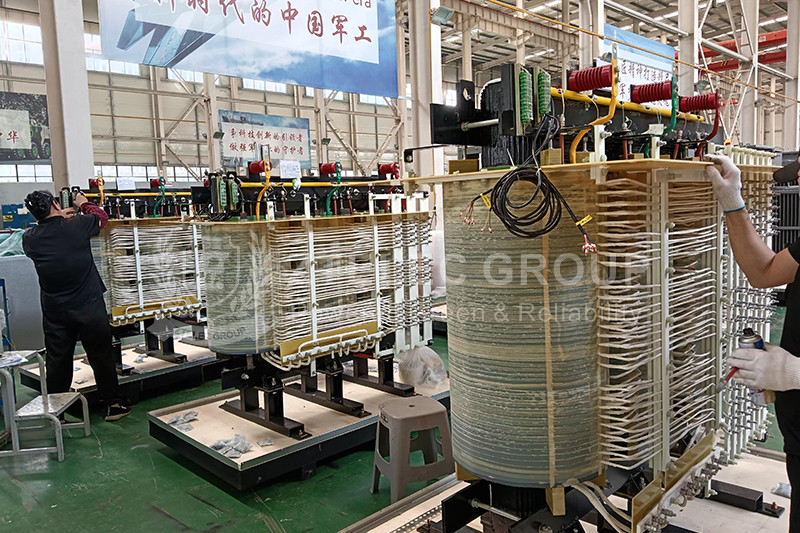How to Select the Right Voltage for Oil-Immersed Transformers: Complete Guide
Oil-immersed transformers play a critical role in power systems by stepping voltage levels up or down efficiently. Choosing the correct voltage specifications for an oil-immersed transformer directly impacts the system’s reliability, safety, and energy efficiency. Whether you're upgrading an existing power network or designing a new substation, voltage selection should be based on grid parameters, load demands, operational conditions, and future scalability.

This guide outlines key considerations for selecting transformer voltage levels, helping engineers and procurement teams make technically sound and cost-effective decisions.
1. Understand Transformer Voltage Levels
Primary (Input) Voltage: The transformer’s input voltage must match the utility grid’s rated voltage. Standard high-voltage levels include 6kV, 10kV, 35kV, 110kV, and 220kV. It's essential to confirm both the nominal voltage and potential fluctuation range of the grid to ensure stable connection and compatibility.
Secondary (Output) Voltage: This must align with the requirements of the load equipment. Common options include 400V for low-voltage industrial usage or 6.6kV for medium-voltage systems. For example, general factory lighting or motors typically run on 400V, while large compressors or rolling mills may need 6kV or higher.
2. Consider Grid Conditions and Stability
Voltage Fluctuation Tolerance: In networks where grid voltage varies within ±10%, consider oil-immersed transformers equipped with a wider tap changer range—such as ±2×2.5% or ±5%—to regulate output voltage without external devices.
Short-Circuit Capability: Higher primary voltage reduces short-circuit current levels, enhancing safety. However, appropriate high-voltage switchgear must be used to handle the corresponding insulation and interruption requirements.
3. Analyze Load Characteristics
Load Type and Startup Behavior: For loads with high inrush currents (e.g., motors), choose a transformer with suitable short-circuit impedance to reduce voltage dips during startup.
Rated Capacity and Expansion: The transformer’s capacity should exceed the current total load (in kVA or MVA) by 20%–30% to account for future expansion. Undersized transformers lead to overload and reduced service life.
Harmonic Content: For loads involving VFDs, rectifiers, or other non-linear equipment, consider K-factor transformers or increase capacity to mitigate harmonic heating and core losses.
4. Energy Efficiency and Lifecycle Cost
Efficiency Standards: Choose oil-immersed transformers that meet or exceed IEC 60076 or GB/T 6451 energy efficiency standards. Class I transformers help reduce no-load and load losses in the long term, especially in systems with high load factors.
Total Cost of Ownership (TCO): Don't just look at upfront price. Consider no-load losses (core losses), load losses (copper losses), and transformer lifespan. A slightly more expensive but high-efficiency transformer may yield better TCO over 20 years of operation.

5. Evaluate Environmental and Installation Conditions
Ambient Temperature and Heat Tolerance: In high-temperature areas, select transformers with Class A or high-temperature insulating oil to avoid thermal breakdown and ensure long-term reliability.
Altitude Consideration: At elevations above 1,000 meters, transformers must be derated or custom-built. For every 1,000m increase in altitude, the permissible temperature rise must increase by 3–5% to offset cooling inefficiency caused by thinner air.
IP Rating for Outdoor Use: For outdoor installations or dusty environments, transformers with IP55 or higher protection should be used to resist moisture, insects, and airborne contaminants.
6. Plan for Special Functional Requirements
On-Load Tap Changer (OLTC): Applications such as photovoltaic integration, rural power networks, or long-distance transmission often experience real-time voltage fluctuation. OLTC-equipped transformers enable smooth voltage regulation while under load.
Multi-Winding Design: When multiple output voltages (e.g., 380V and 6kV) are needed at the same time, three-winding transformers help simplify circuit architecture and improve energy distribution efficiency.
7. Key Considerations Before Purchase
Regulatory Compliance: Ensure the transformer conforms to local electrical standards, such as IEC, ANSI, or regional utility (e.g., State Grid) requirements. Compliance ensures faster grid connection and regulatory approval.
System Compatibility: Confirm that the transformer integrates well with your existing protection systems, including fuses, relays, circuit breakers, and monitoring devices. Work with the manufacturer to verify relay coordination and fault response times.
Ease of Maintenance: Oil-immersed transformers require periodic checks of oil level, insulation resistance, and oil quality. Ensure there's adequate space for oil tank access, thermal expansion, and safety clearance around the unit.
Choosing the right voltage for an oil-immersed transformer is a multi-faceted process that involves not just matching current system parameters but also planning for future scalability and energy efficiency. By carefully evaluating the grid environment, load profile, and site conditions, engineers can select a transformer that delivers optimal performance over its entire life cycle.
- more+releated article
- 2025-10-21Application of K Factor Transformer
- 2025-10-21Detailed explanation about transformer model w
- 2025-10-2010kV Oil-Immersed Transformer Safety: Lightnin
- 2025-10-20What are The Advantages of Phenolic Cotton Clo
- 2025-10-17Are Three-Phase Isolation Dry-Type Transformer
- 2025-10-17G10 Epoxy Sheet: Choosing the Right Specificat
- 2025-10-1610kV Oil-Immersed Transformer Operation Inspec
- 2025-10-163240-B Epoxy Phenolic Glass Fiber Cloth Lamina
- 2025-10-15G10 Epoxy Sheet: The Preferred Insulation Mate
- 2025-10-15Analysis of Energy-Saving and Noise Control Te





